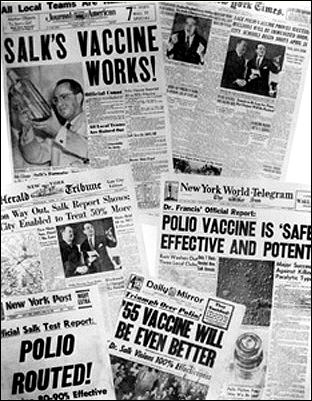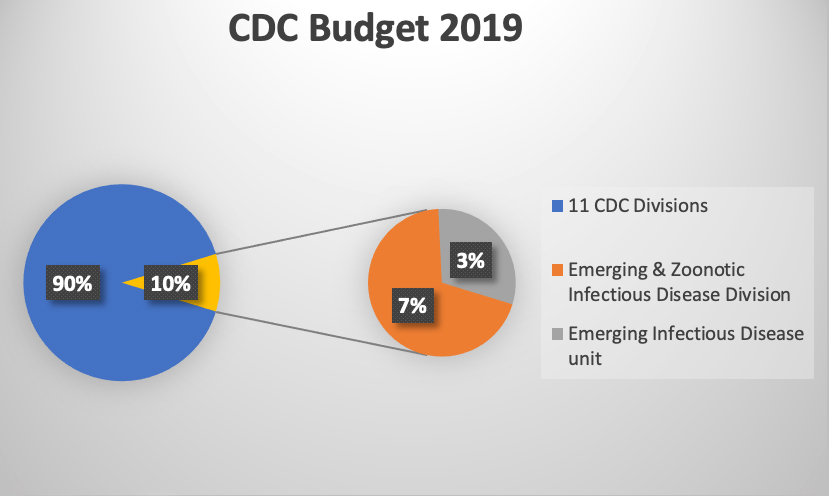Cameron English’s article on declining trust in federal public health agencies noted that the general public finds it problematic that important issues like gun violence or racism are characterized as public health problems.
What is Public Health?
 Public health once meant vaccinations, sanitation, and education. Today, The CDC defines public health as “the science and art of preventing disease, prolonging life, and promoting health through the organized efforts and informed choices of society, organizations, public and private communities, and individuals.”
Public health once meant vaccinations, sanitation, and education. Today, The CDC defines public health as “the science and art of preventing disease, prolonging life, and promoting health through the organized efforts and informed choices of society, organizations, public and private communities, and individuals.”
There is no doubt that the Salk polio vaccine in 1955 represented one of the early triumphs of public health. But what happened to public health since that time?
From the 1950s to approximately 1980, public health in the U.S. focused on three major issues:
- disease prevention, including malaria control, vaccinations against smallpox and other diseases, and prevention of tuberculosis
- dental health, including water fluoridation
- maternal health and safer childbirth.
In the 1980s, government agencies, universities, and public health associations began to broaden their concern to issues including family planning, smoking prevention, and food and nutrition. In the 1990s, there was further expansion into mental health, injury prevention, and drug addiction. HIV/AIDS, a more traditional public health problem, was one of the true success stories for public health in the 1990s, with a sharp decline in deaths in the U.S. after 1995, due to highly effective drug treatments.
Starting in 2000, public health really lost its focus and exploded into a myriad of issues. Among the issues now included under the public health umbrella were racism, disabilities, gun control, housing, and climate change. To be clear, these social science and equity issues are important. Still, public health’s focus, and funding, on these issues meant that less attention was paid to other, more traditional areas of public health, such as the study of infectious diseases.
The Centers for Disease Control (CDC)
The CDC is one of the major public health agencies responsible for responding to the pandemic in the U.S. It is part of the Department of Health and Human Services (DHHS) which had a 2019 budget of $90 billion. Of that, the CDC’s budget was $7 billion ($6,477,883,000 to be exact). For comparison, the National Institutes of Health’s was $39 billion, the Substance Abuse and Mental Health Services Administration’s was $5.7 billion. Alzheimer’s disease research was $2.3 billion, and the opioid misuse epidemic, $3.8 billion. [2]
The CDC is divided into 11 major divisions, with the largest division “Chronic Disease Prevention and Health Promotion” focusing on tobacco, nutrition, physical activity and obesity, school health, prevention research centers, heart disease and stroke, diabetes, cancer, oral health, safe motherhood/infant health, arthritis, racial and ethnic approach to community health, and Alzheimer’s disease.
Only one division focuses on infectious diseases, “Emerging and Zoonotic Infectious Diseases” (for all us jargon-free people, zoonotic means that it is transferred from animals to people) that is responsible for:
- Antibiotic resistance
- Vector-borne disease, e.g., Lyme disease
- Chronic fatigue syndrome
- Food safety,
- National Healthcare Safety Network, an infectious disease reporting system
- Quarantine,
- Advanced molecular detection of infections
- Harmful algal blooms.
- And emerging infectious diseases

Approximately 10% of the total budget of the CDC was spent on infectious diseases in 2019, a third of which was spent on “emerging infectious diseases,” the unit responding to the COVID-19 pandemic.
The Covid-19 Pandemic What went wrong?
With only 3% of the CDC’s total budget spent on emerging infectious diseases, it is no surprise that the U.S. failed in its response to the pandemic. The following are some areas of failure:
- No early warning system
- Lack of widespread and fast testing in early months
- Health systems unprepared with equipment and personnel
- Inadequate Lockdown/quarantine policies
- Late to focus on virus variants
- Governmental communication and messaging were often confusing, conflicting, and with time, proven wrong.
Why was such a small part of the CDC’s budget spent on emerging infectious diseases? Scientists and politicians were aware of the potential threat from pandemics; in fact, in 2005, George W. Bush assigned each of his top DHHS appointees to read “The Great Influenza” by John Barry about the 1918 global flu pandemic. At the same time, the nation’s health secretary, Mike Leavitt, unveiled a plan to tackle bird flu and other potential infectious disease threats – he was mocked as an alarmist and ridiculed by late-night TV hosts.
However, subsequent administrations failed to renew funding as other threats, and “hot” issues emerged. Understandably, elected officials pay attention to highly publicized concerns; this is a way to respond to the public they serve. Universities and associations likewise chase after the “hot” issues of the day – they too follow the money. That is why it is so essential that our government agencies maintain a disciplined, focused approach on their core mission, instead of bouncing, like someone with attention deficit disorder from one “hot” concern to another. I believe that if the CDC had stayed focused on its core mission, i.e., preventing the spread of infectious diseases in the population, there would have had a more coordinated, successful response to the COVID-19 pandemic.
Conclusions
Every agency should have its core mission, but it is particularly essential in science-related agencies because when they lose their focus, the ramifications can be tragic. The solution is for the CDC to have a laser-like focus on the control of infectious diseases and avoid the “mission creep” of the last number of years. An analysis should be carried out on the social issues currently under the CDC’s purview to determine how, or if, they fit under the HHS umbrella or somewhere else in the government.
[1] The fight against malaria, endemic in the Southern US in the 40s, is the reason why the CDC was, in 1946, initially located in Atlanta, Georgia
[2] The rest of the budget goes for Medicare/Medicaid, the FDA, and various other health-related issues.
Sources
Advisory Board. Congress just passed its 2019 HHS spending bill. Here’s what made the cut.
CDC. FY2020 Congressional Justification for Budget.
Politico. Inside America’s 2-Decade Failure to Prepare for Coronavirus.




